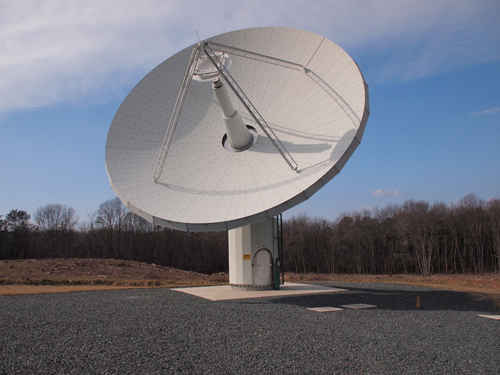USER ALERT: CDDIS will be migrating our website from cddis.nasa.gov to earthdata.nasa.gov starting in February 2025 and ending in June 2025. For more information, please see the following web page (https://cddis.nasa.gov/Web_Unification.html)
VLBI is a geometric technique, measuring the time difference between the arrival at two Earth-based antennas of a radio wavefront emitted by a distant quasar. The simultaneous measurements are compared at correlators; the difference in the arrival times between antennas yields a determination of the distance between the antennas and thus the precise positions of the antennas themselves. The VLBI technique can also determine the inertial reference frame defined by these quasars as well as the orientation of the Earth in this frame.
The globally distributed networks of VLBI antennas participate in highly coordinated experiments in order to perform simultaneous measurements, which are compared and correlated, generating VLBI database files. As additional analysis is performed on the experiments (e.g., the application of meteorological information, theoretical quantities and models), new versions of the database files are generated and archived. All versions are retained at the CDDIS and other IVS data centers for documentation purposes. The VLBI experiment data consist of the observing site parameters, source information, correlated delay and delay rate between the observing antennas as a function of time, along with meteorological data and system parameters that must be applied to the correlated measurements.
The CDDIS is one of the primary data centers supporting the International VLBI Service for Geodesy and Astrometry (IVS). Network stations forward raw observations to correlators who then submit the experiment databases to the IVS data centers.



